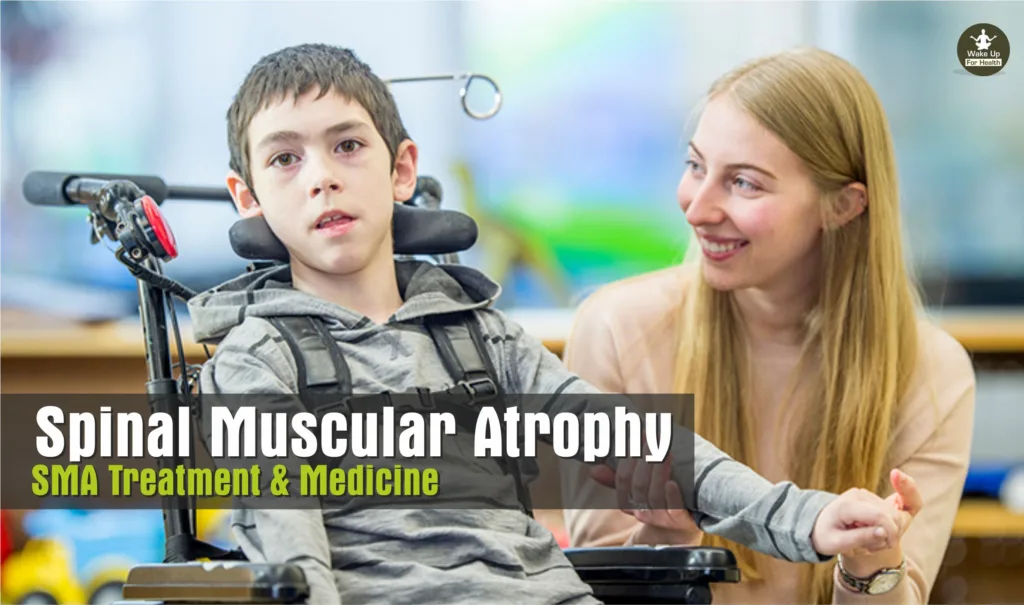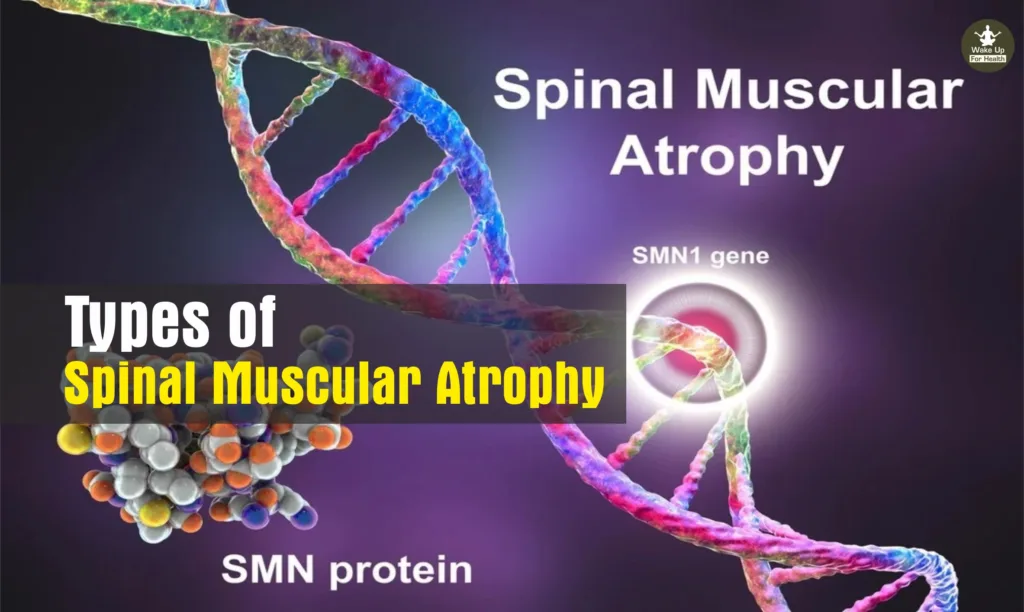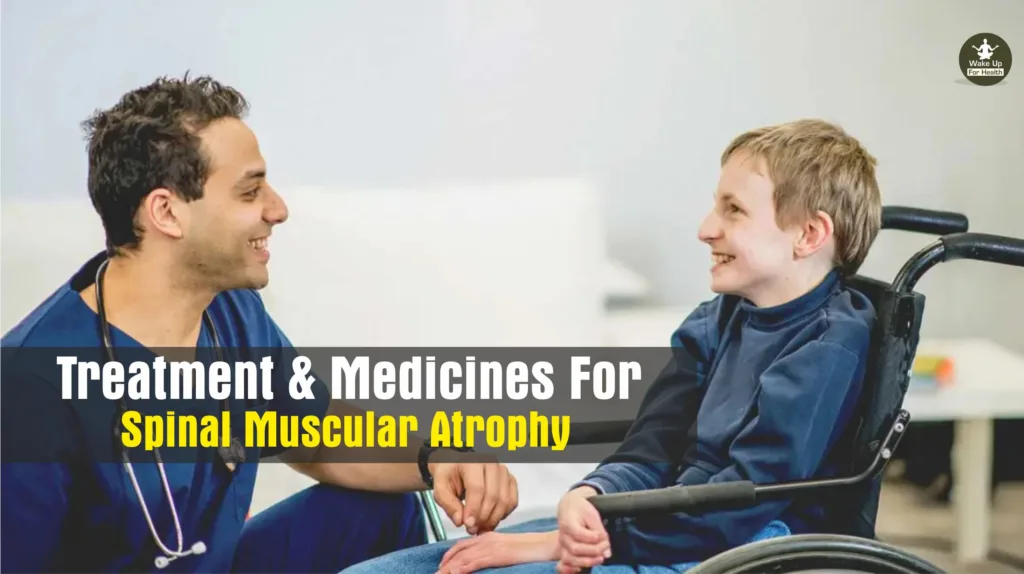You too must have read or heard somewhere about such a disease, for the treatment of which the patient needs injections worth crores of rupees. Actually or disease is spinal muscular atrophy. It is a group of genetic diseases in which a person has damage to the nerves from the spinal cord to the brain. This disease is seen in different forms in patients. According to an information, this disease is seen in about 400 children in America annually. Many cases of this serious disease have also been seen in India. Let us know in detail about this disease.

Navigating Spinal Muscular Atrophy
Spinal Muscular Atrophy (SMA) refers to a group of inherited neuromuscular diseases that affect nerve cells Motor Nerve cells/Motor Neurons) and control of voluntary muscles.
SMA, which is the leading genetic cause of death in newborns and babies with suffocation, destroys motor neurons (Motor Neurons) in the base of the brain and spinal cord, which are essential for normal muscle function. Can’t provide signal.
Involuntary muscles, such as those that control the function of the bladder and bowel and rectum, are not affected in SMA. Hearing and vision are not affected, and intelligence is normal or above average.
Must Also Know About : Bipolar Treatment | Bipolar Disorder Causes, Symptoms & Lifestyle
Types of Spinal Muscular Atrophy (SMA)?, Identifying SMA Types, Treatment Approaches
The three major, childhood-onset forms of SMA are now commonly referred to as Type 1, Type 2, Type 3, and Type 0. All these four variants are also called autosomal recessive SMA, meaning that children must inherit the defective gene from both parents in order to have the disease.
All forms of SMA affect the Skeletal Muscles of the trunk, arms, and legs. Usually the muscles that are closer to the middle of the body are more affected than the muscles that are further away.

1. SMA Type 1
The most severe form, mostly affects the nerves controlling the muscles of the mouth and throat, and is therefore more likely to cause problems with chewing and swallowing. In all forms of the disease, the respiratory muscles are involved to varying degrees. The onset of disease in SMA type 1 is visible within the first six months of a child’s life. Children with SMA type 1 are unable to sit up without support, and usually die before the age of two.
2. SMA Type 2
There is an intermediate form of the disease. It begins between seven and eighteen months. Children with SMA type 2 usually learn to sit without support, but cannot learn to stand or walk without support. The survival of the child mainly depends on the level of difficulty in breathing and swallowing.
3. SMA Type 3
A relatively mild form of the condition. It begins after the age of eighteen months, and most commonly between the ages of five and fifteen. Weakness of the masticatory and swallowing muscles is rare, and respiratory effects are not as severe as in the first two forms. These children may be successful in reaching adulthood. Respiratory complications, if they occur, pose the most serious threat to life.
4. SMA Type 0
This is the worst and most severe form of SMA. It develops in the mother’s womb, causing babies to either die in the womb or be born with weak muscle tone, joint problems, weak muscles or breathing problems. Very few such children survive.
When Bollywood Star Salman Khan Sick of : Trigeminal Neuralgia : Symptoms, Causes, Diagnose and Treatment
What are the Causes For Spinal Muscular Atrophy?
Spinal muscular atrophy is a disease that is passed from family members to children. If your child has spinal muscular atrophy, he has a gene defect. If one of the bad genes is passed on to the child, then he will not get spinal muscular atrophy disease, but he will be infected with it. In the future, your child’s genes can also go to his child. Diagnosing Spinal Muscular Atrophy is a bit difficult because its symptoms are similar to those of other diseases. To know the symptoms, the doctor will ask you about your child like –
1.Does your child have difficulty in raising the head or turning in any direction?
2. Does your child have trouble sitting or standing on their own?
3. Does your child have trouble breathing?
3. Have you ever seen any such Symptoms in your family before?
Treatment and Medicines For Spinal Muscular Atrophy (SMA)?

At this time there is no known treatment that can prevent or reverse SMA. Physical therapy and orthopedic devices can help maintain walking function. Braces or surgery may also help counteract scoliosis, the curvature of the spinal column.
Researchers around the world are working together to find the cause of SMA; Most cases of this disease are caused by a deficiency of a protein called SMN (Survival of Motor Neuron). This deficiency occurs when a mutation is present in both copies of the SMN1 gene – one copy on each chromosome 5.
Also Know About : Toxic Shock Syndrome (TSS) Symptoms, Causes, Tampons and Prevention
Scientists are looking forward to characterizing genes, studying gene function and disease progression, and finding ways to prevent, treat, and eventually cure these diseases.
Unfortunately, there is currently no specific cure for SMA. However, research into a treatment is progressing at a rapid pace (please see below) and there are things that can be done to support children and adults with the disease and their families to get the most out of life .
1. Physiotherapy (Physical Therapy) and Occupational Therapy (Occupational Therapy).
The physiotherapist may prescribe stretching and tightening exercises to help prevent the muscles from shortening (contractures) which can limit joint movement. Learning breathing exercises and chest physiotherapy will also help reduce the effects of chest infections.
About half of people with SMA type 3 are more likely to develop progressive scoliosis (curvature of the spine) after they become full wheelchair users. If necessary, the physiotherapist will discuss correct posture and bracing to minimize the progression of the curvature. But eventually surgery may be required.
2. Respiratory Health and Nutrition
People with SMA type 3 usually have good respiratory function well into life. However, general assessments should still be done at regular intervals so that any problems can be detected early. When the respiratory muscles become weak, air cannot move in and out of the lungs properly, which adversely affects general health. Signs of weakened respiratory muscles are: headaches, trouble sleeping at night, excessive daytime sleepiness, trouble concentrating, and chest infections. Portable, effective ventilation devices are available that can greatly improve lifestyle. These are generally needed only at night.
Having a cold or flu can cause breathing problems because a weak cough may not be able to clear mucus from the lungs. Occasionally chest physiotherapy and possibly non-invasive ventilation as well as a cough assist device such as a “CoughAssist” machine may be needed. Routine vaccinations, including the influenza vaccine, are also recommended.
Swallowing problems can occur in SMA type 3, but are less common than in SMA type 2 and occur later in the disease. It should be managed by a dietician and speech and language therapist.
3. Spinal Surgery
Because of the weakening of the muscles that support the bones of the spinal column, scoliosis (curvature of the spine) often develops in people with SMA who are full wheelchair users. If it becomes severe it can cause discomfort and can adversely affect the breathing process. Surgery can be done to straighten the spine and prevent further deterioration.
Medicines for Spinal Muscular Atrophy (SMA)
There are many medicines available for spinal muscular atrophy. All these medicines are given below. But keep in mind that please do not take any medicine without consulting the doctor. Taking medicines without doctor’s advice can cause serious damage to your health.
Medicine Name : Spinraza | Nusinersen
Must Read About : Cluster Migraine Headache | Types, Symptoms, Treatment & Home Remedies
(Disclaimer : The purpose of this health-related article is to wake you up and aware of your health and to provide health-related information. Your doctor has a better understanding of your health and there is no substitute for their advice.)
F.A.Q.
Question 1 : What is the life expectancy for spinal muscular atrophy?
Answer : Outlook / Prognosis : Infants with type 1 SMA usually die before their second birthday. Children with type 2 or type 3 SMA may live full lives depending on the severity of symptoms. People who develop SMA during adulthood (type 4) often remain active and enjoy a normal life expectancy.
Question 2 : Can spinal muscular atrophy be cured?
Answer : It’s not currently possible to cure spinal muscular atrophy (SMA), but research is ongoing to find new treatments. Treatment and support is available to manage the symptoms and help people with the condition have the best possible quality of life.
Question 3 : Who is the oldest SMA patient?
Answer : They have the hearts and minds and courage to keep learning.” Steve Mikita is one of the oldest people living with SMA at 64 years old.
Question 4 : Is SMA tested at birth?
Answer : Newborn screening for SMA can be included with routine newborn screening for other disorders during the first few days of life. Newborn screening for SMA looks for problems with the SMN1 gene. This process uses the same dried blood spots already collected for screening of other disorders.
Question 5 : What is SMA injection cost?
Answer : People with SMA lack protein in their genes to function with motor neurons properly. Spinraza enhances the body’s ability to produce the required protein. The cost of Spinraza in India is around $1,08,000 per injection.
1 thought on “Spinal Muscular Atrophy Treatment | SMA Types, SMA Causes, Treatment & Medicine”